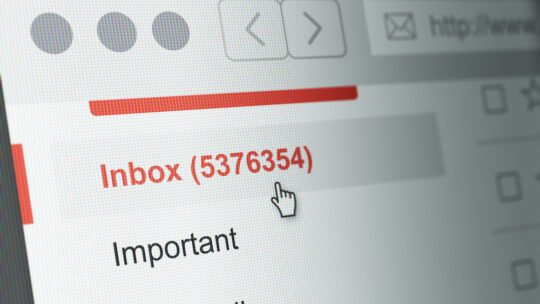
Competing for journalists' attention isn't easy. Reporters are bombarded by numerous press releases and news tips every day. Naturally, not every story ends up being published, and not every expert gets a chance to see their name in a magazine.
There are, of course, various tactics to help win the race for the attention of the mass media. A well-executed and thoughtfully created press kit is a foundational factor for breaking through the noise and being noticed by editors and journalists.
I've been working in PR for more than a decade, having focused on startups, venture funds and tech companies. My clients get press hits in Forbes, TechCrunch, Vogue and other top-tier media outlets. Press kits play an important role in this, as they impact reporters' decisions. An efficient press kit helps a journalist to immediately see the whole picture and makes their job easier. Here are the best practices for creating an efficient press kit based on my experience in the industry.
Introducing the Company
You need to help journalists understand what the company is (be it an established corporation, a startup or a VC fund) that you are representing. A press kit should include two descriptions of the firm—one brief, one more detailed. The brief description may consist of one or two paragraphs of basic information. When writing it, imagine you are working on an introduction for a Wikipedia article about the company.
The detailed description should be longer and may include the date of establishment, the location of headquarters and locations of branch offices, countries of operation, the fundraising history, investors, the number of clients, amongst other information. And if the information is not under NDA, add key indicators that show growth of the business. Editors and journalists do love numbers and charts. Also, in the detailed description, there should be the explanation of the product/organization and how it works.
Introducing the Key Stakeholders
Reporters are always searching for experts who can comment on industry trends and tell a fascinating story based on their experience. A press kit should include information about all the key sources that represent your company. For each source it's necessary to write their bio, indicate their area(s) of expertise and what topics they can comment on.
Do not forget to attach headshots of the speakers. Prior to starting a PR campaign, make sure all the company's experts have high-quality portraits you can submit to publications. If there are none, don't hesitate to arrange a photoshoot in order to get the necessary photographs.
In addition, you can include links to a source’s talks and interviews. It's important to be selective and choose only the best ones. If you add such links, write a short description of what each video/link is and why it may be interesting.
How to Deliver a Press Kit
Since we live in the age of digital communication, you need to gather all press kit components into a folder within a cloud storage or a file-sharing service (for instance, Google Drive or Dropbox). Give each file a clear name that makes it easy to understand what it is. When sending a press kit via email, give the list of all documents included in the body of the email, so that it is clear to a journalist as to what is included.
You can use presentations for the press kit with, or instead of, text documents. For example, if you are working with a startup, you may share its pitch deck. In general, a presentation may be delivered to give a detailed description of the company and introduce the speakers. If you decide to go with a presentation, it's preferable to keep it as a PDF, because this type of file can be opened on almost each and every device.
In summary, a press kit is a key factor to gain the attention of the mass media. It helps journalists to understand your company and its value for their media outlets. To make a press kit efficient and appealing, include brief and detailed descriptions of your company and add information about its key sources. Don't hesitate to invest time and effort into creating an informative and comprehensive press kit, because it does pay off.
Katerina Antonova is founder and CEO of Aeris PR.
